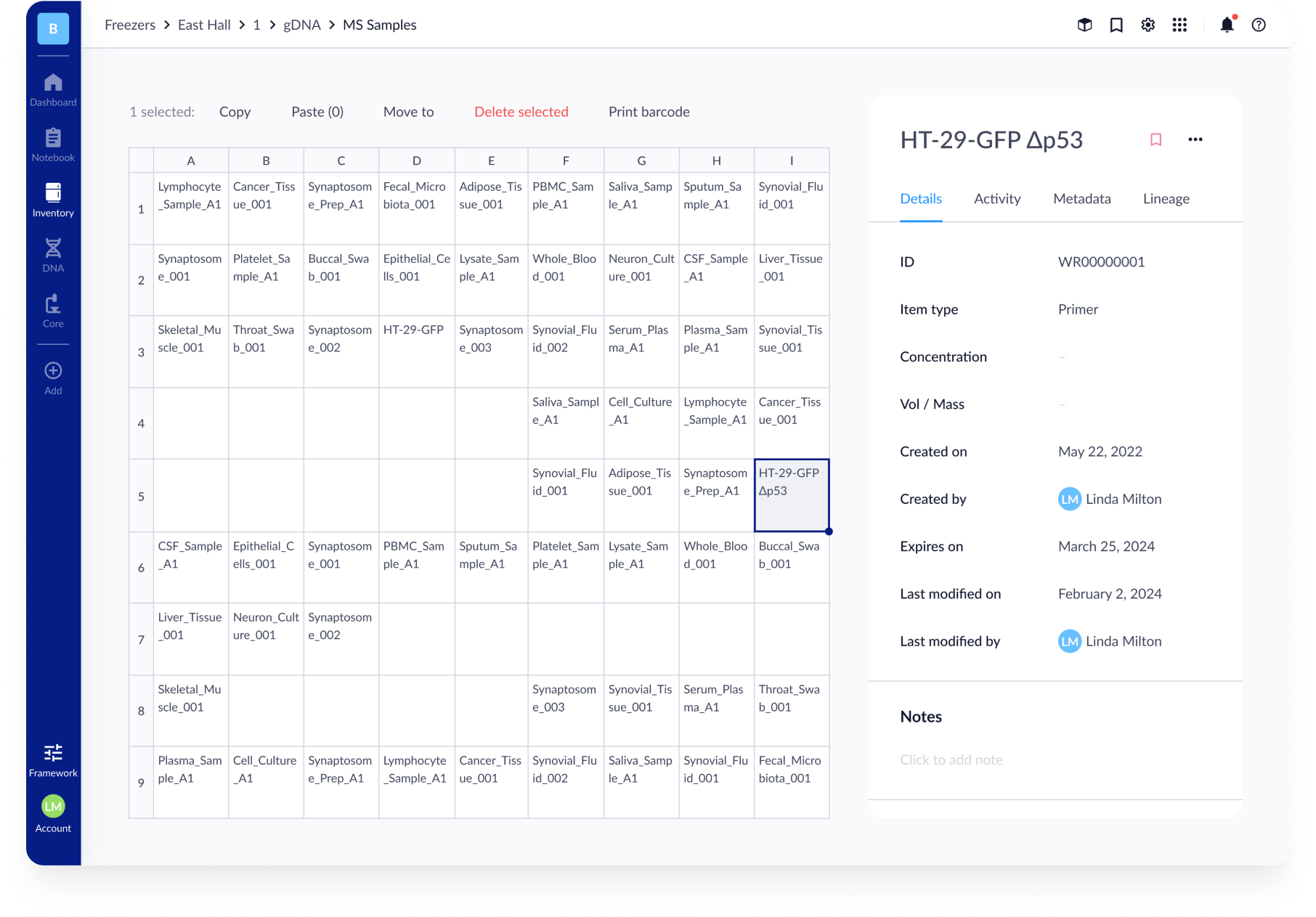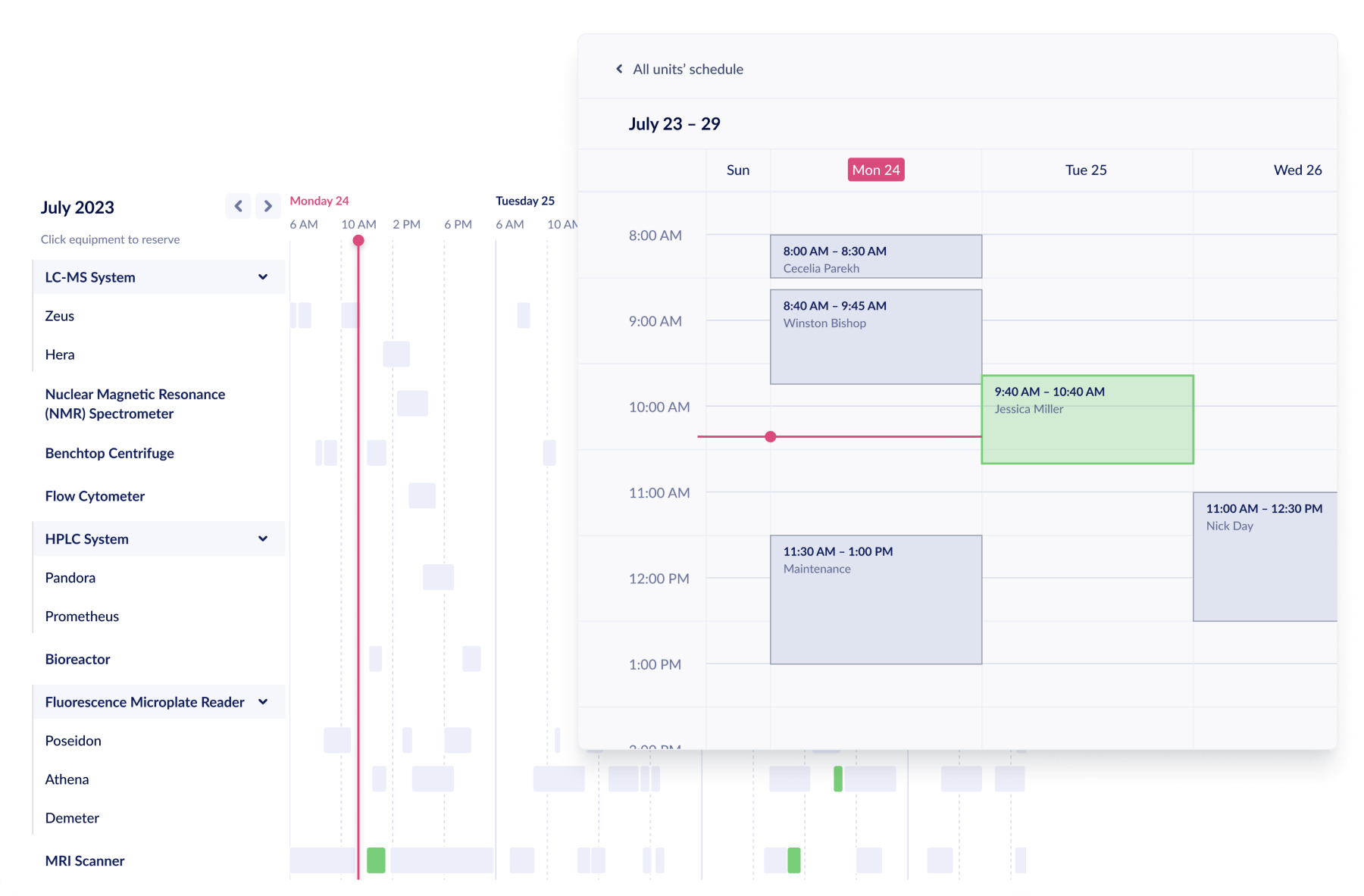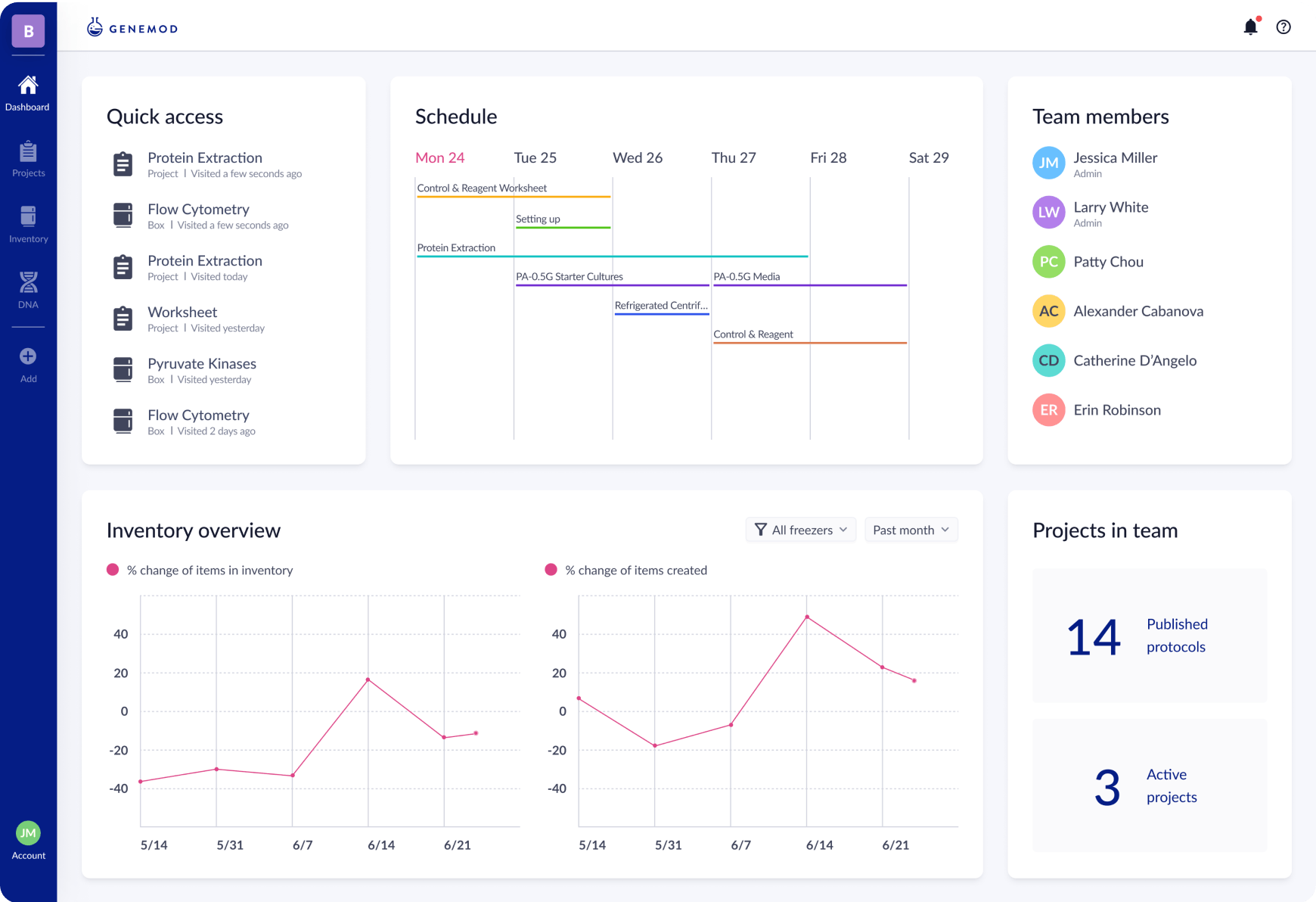Products
Advanced cloud-based LIMS software for research labs
LIMS software is designed to streamline and automate core lab functions. By centralizing information and reducing manual tasks, a LIMS enhances efficiency, ensures data accuracy, and enables labs to scale their operations with confidence. Learn how implementing a LIMS can transform your laboratory by improving productivity, collaboration, and overall operational control.
What is LIMS?
A Laboratory Information Management System (LIMS) is a comprehensive software platform that supports the efficient management of laboratory operations by centralizing data, automating routine tasks, and standardizing workflows. A LIMS is commonly used to track samples throughout their lifecycle, manage experimental data, coordinate equipment usage, and ensure compliance with industry regulations and quality standards.
A LIMS can be customized to fit the needs of research, clinical, environmental, or manufacturing laboratories, providing the flexibility and scalability required to support evolving scientific demands. Whether managing complex workflows or handling high-throughput operations, a LIMS enables laboratories to operate more efficiently, make informed decisions, and maintain full traceability across all lab processes.
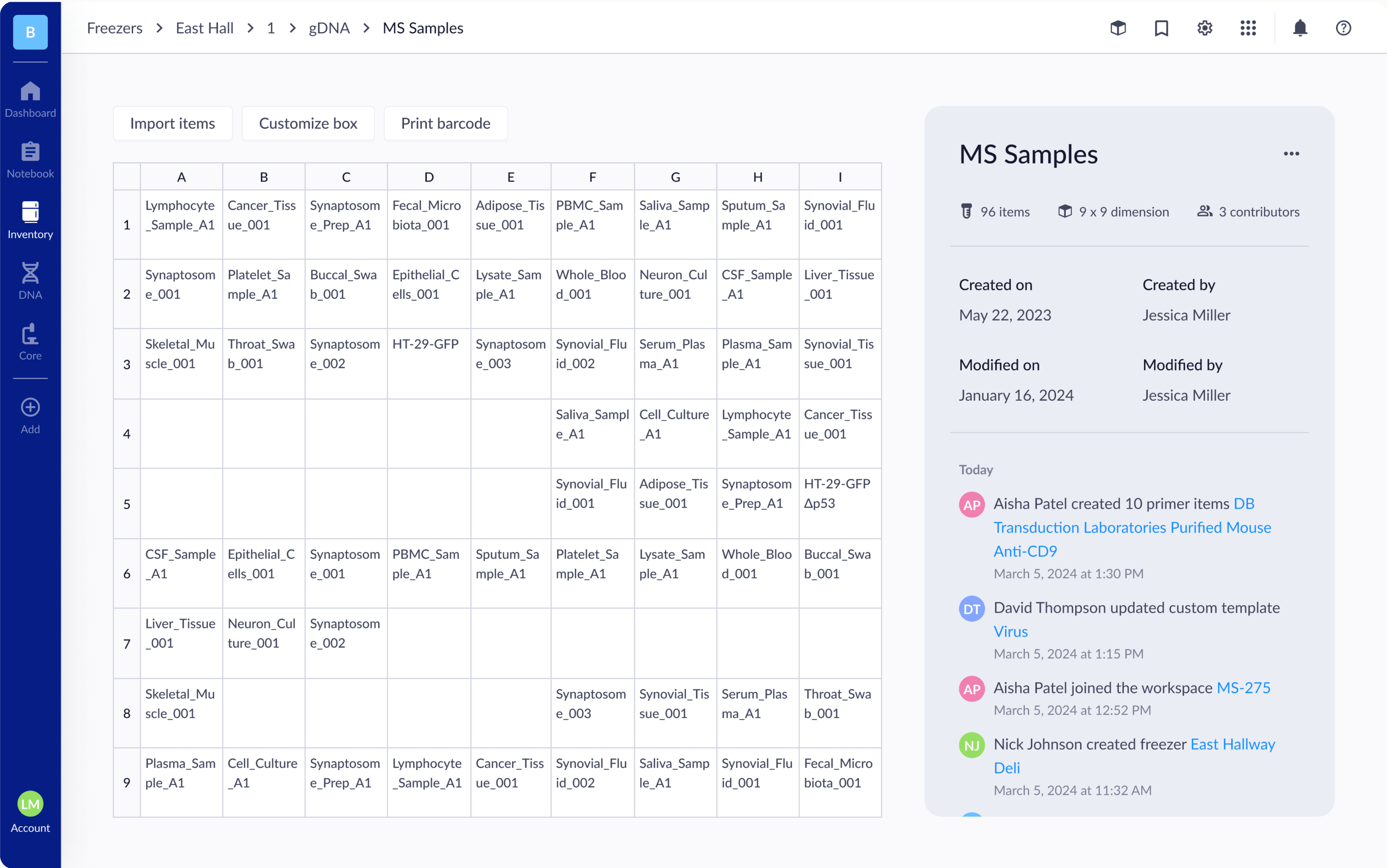
LIMS are used by scientists and lab personnel across a wide range of disciplines to streamline operations and maintain data integrity. LIMS solutions are commonly implemented in industries such as pharmaceuticals, biotechnology, clinical diagnostics, quality control, manufacturing, and environmental monitoring. They support a variety of specialized workflows, including clinical research and diagnostic testing, biobank and biorepository management, agricultural and food safety analysis, environmental testing, and oil and gas quality assessments. By supporting these diverse applications, LIMS plays a critical role in improving efficiency, ensuring compliance, and enabling data-driven decision-making across the scientific landscape.
Why use LIMS?
LIMS brings long-term value by streamlining operations, reducing manual workloads, and improving overall lab performance. As laboratories handle increasing volumes of data and navigate strict regulatory requirements, a LIMS provides the structure and automation needed to maintain accuracy, speed, and consistency across workflows.
Manual processes, such as entering data into spreadsheets or tracking samples by hand, are not only time-consuming—they’re also prone to error. In regulated industries like pharmaceuticals, diagnostics, and biomanufacturing, even a minor mistake—such as a mislabeled sample or an incorrectly recorded measurement—can trigger costly delays, regulatory setbacks, or compromised results. A LIMS safeguards against these risks by automating data capture, enforcing protocol adherence, and maintaining a complete, traceable record of all lab activity.
By digitizing and centralizing key functions such as sample tracking, inventory control, and reporting, a LIMS improves staff efficiency and reduces time spent on low-value administrative tasks. This shift allows teams to focus more on scientific work and less on managing logistics, ultimately accelerating project timelines and increasing throughput.
LIMS also help laboratories operate more cost-effectively by optimizing resource utilization. Automated inventory alerts prevent stockouts and reagent expiration, while integrated equipment tracking reduces downtime and extends asset lifespan. These efficiencies not only reduce waste but also support more predictable, stable operations.
With standardized workflows and audit-ready documentation, LIMS software strengthens regulatory compliance and reduces the likelihood of non-conformance issues. It also enables better visibility across teams, improving communication, collaboration, and strategic planning.
In fast-paced, high-stakes environments, a LIMS isn’t just a productivity tool—it’s a critical investment that helps labs operate smarter, avoid avoidable setbacks, and achieve long-term, sustainable growth.
Benefits of LIMS
A Laboratory Information Management System (LIMS) can transform your lab into a more agile, scalable, and high-performing operation. By eliminating manual bottlenecks and streamlining routine processes, a LIMS allows researchers to focus on meaningful scientific work instead of administrative tasks. Below are key benefits of adopting a LIMS solution:
Operational Efficiency:
LIMS centralizes lab protocols, data, and workflows into a single, accessible platform—reducing the time spent searching for files, updating spreadsheets, or coordinating tasks manually. Real-time dashboards and automated notifications keep teams aligned, helping accelerate project timelines and improve throughput without additional overhead.
Improved Accuracy and Data Integrity:
Manual data entry is one of the most common sources of lab error. A LIMS reduces this risk by automating data capture, validation, and tracking. With integrated systems and standardized workflows, information flows securely between instruments and teams—minimizing duplication, omissions, and transcription errors.
Higher Productivity:
With routine calculations, reporting, and compliance documentation handled automatically, scientists and technicians can spend more time on research and analysis. LIMS empowers teams to do more in less time—supporting faster discoveries and stronger scientific outcomes.
Cost Savings and Resource Optimization:
By reducing rework, minimizing errors, and optimizing inventory and equipment usage, a LIMS drives measurable cost savings. From improved resource planning to fewer delays in sample processing, every aspect of lab operations becomes more cost-effective over time.
Scalability and Compliance:
Whether your lab is growing in size, expanding into new research areas, or working under strict regulatory frameworks, a LIMS provides the structure and traceability needed to scale confidently. With built-in audit trails, version control, and protocol enforcement, your lab stays compliant while adapting to new demands.

Simplify Inventory Tracking
LIMS software makes it easy to manage and monitor your lab’s inventory in real time. With customizable virtual storage that mirrors your physical freezers, your team can quickly locate samples and materials without confusion. Centralized electronic tracking ensures that everyone has access to accurate, up-to-date inventory and resource planning—reducing waste, saving time, and improving lab efficiency.
Improve Your ELN Workflow
A modern electronic lab notebook (ELN) enhances collaboration, streamlines documentation, and accelerates scientific workflows. With real-time, live-editing capabilities, your team can work together seamlessly—whether documenting experiments, refining protocols, or reviewing results. Centralized access to experimental data ensures that information is always up to date and easy to find, reducing redundancy and improving traceability. By minimizing manual documentation and keeping your team aligned, the ELN allows researchers to focus more on science and less on administrative tasks.

See why thousands of scientists trust us
Laboratory Information Management System (LIMS)
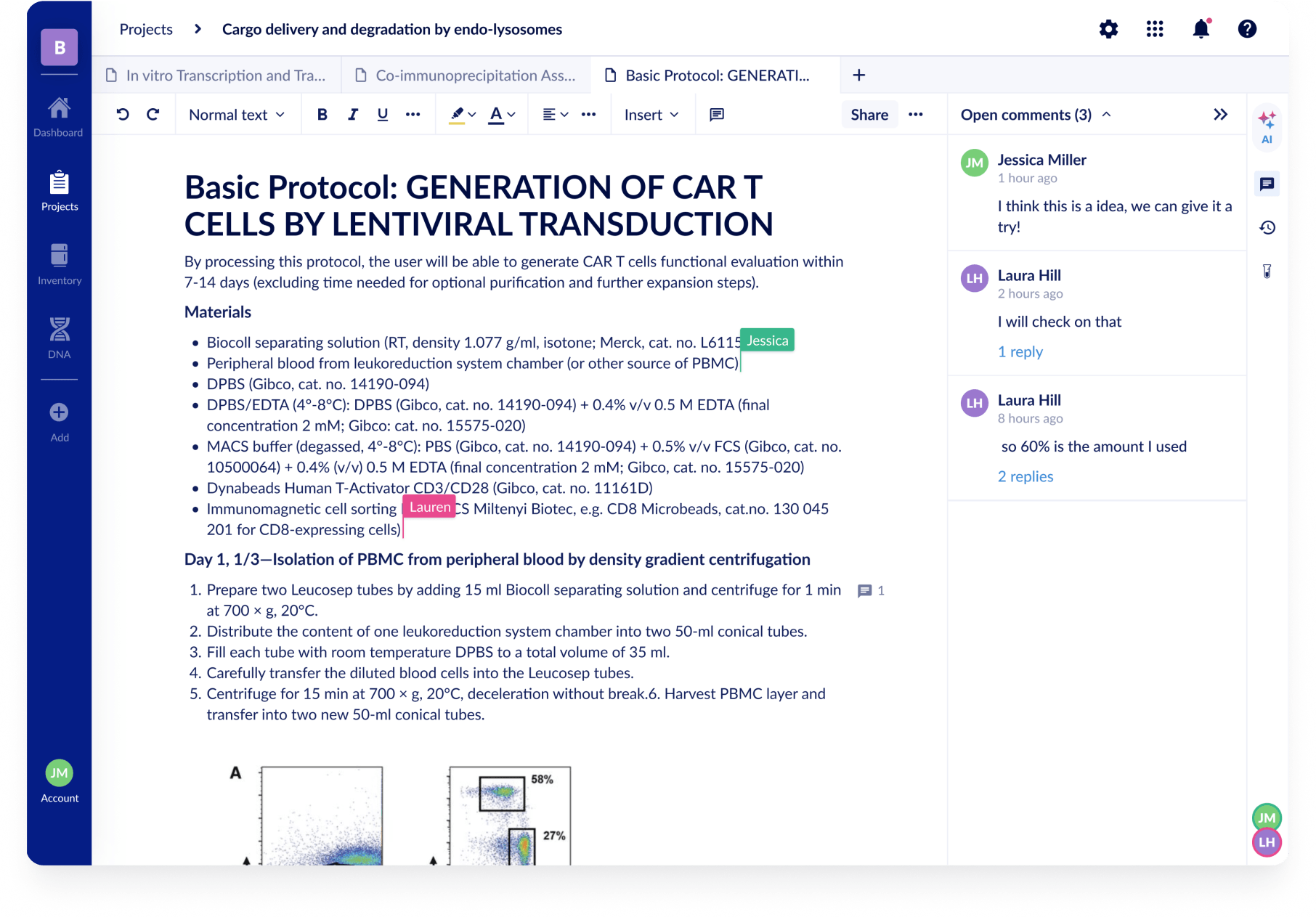
Laboratory Information Management System (LIMS)
Genemod's comprehensive LIMS software and Electronic Lab Notebook (ELN) transform lab operations into streamlined, efficient workflows.
3–4.5x in return of investment
85% reduction on repetitive tasks
90% reduction in human error in data recording
70% reduction in lead time
Sample management software with virtual lab freezer
Stock tracker for biopharma lab inventory management
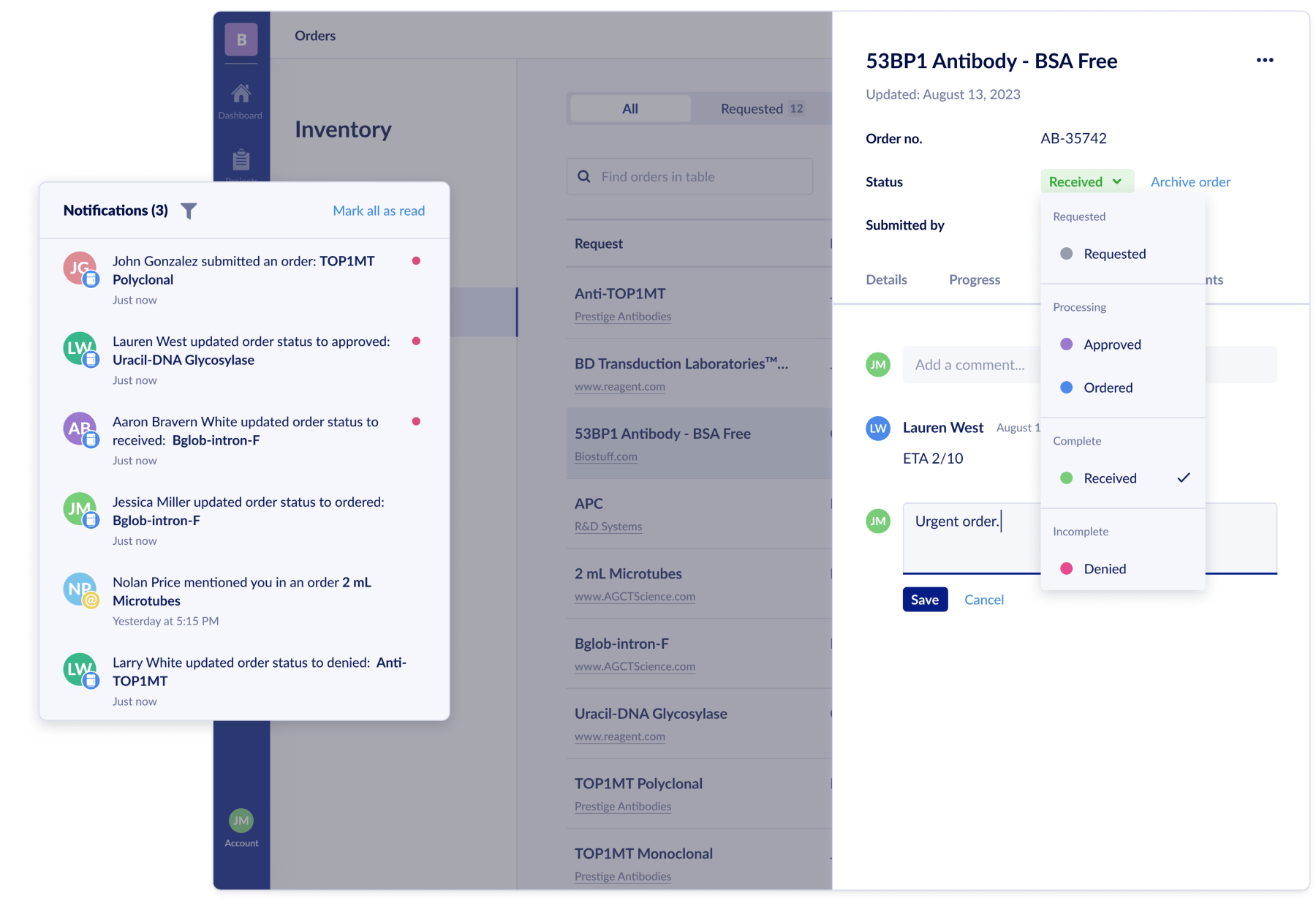
Stock tracker for biopharma lab inventory management
Genemod's lab inventory tracking solution enables enhanced operational efficiency and significant time savings, designed specifically for refined laboratory management.
Efficient management of samples and consumables
Streamlined restocking process
Integration of research workflows and databases








